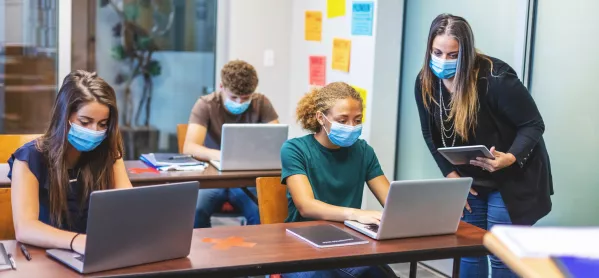Firm evidence that schools being open leads to an increase in the spread of the coronavirus has been published in a new government report this evening.
The report, from scientists on the government’s Children’s Task and Finish Group, says there is not enough evidence to say how effective school closures would be in preventing the spread of the coronavirus.
However, it states that “overall, accumulating evidence is consistent with increased transmission occurring amongst schoolchildren when schools are open, particularly in children of secondary school age”.
New term: Plan for Covid hotspot primaries to open two weeks late
Exclusive: New school opening delay agreed by ministers
Covid: ‘Pause’ January school opening, says academies leader
The report, published the day after the government announced further delayed starts to schools after Christmas, is in contrast to studies from Germany and Norway, which found that opening schools had not increased the number of Covid-19 infections.
Coronavirus: Keeping schools open ‘could increase infection’
Despite its conclusion that open schools lead to increased transmission among pupils, the UK report highlights data from the Office for National Statistics (ONS) from September and October which showed no evidence of a difference in the rates of teachers testing positive for Covid compared with key workers and other professions.
Scientists from the government’s Scientific Advisory Group for Emergencies (SAGE) were still warning several weeks after the start of the last term that newly opened schools had “only just begun” to add to a rise in infections.
But today’s report says “multiple data sources“ suggest that secondary school-aged children became infected at a slower rate during October half-term than during the preceding term-time period.
It states: “This pattern is consistent with there being an effect of schools being open on increasing the spread of the virus amongst children.
“There is not enough evidence to quantify the size of the effect of school closures, or indicate what the impact is (if any) on the wider community. Some of the pattern emerging from the Pillar 2 data could be explained by changes in testing behaviour (ie, fewer uninfected children with mild Covid-like symptoms getting tested during half-term). However, when considered alongside ONS CIS [Covid infecton Survey] and SIS [Schools Infecton Survey] data, this indicates a role of schools being open in transmission in children.”
A separate report published today outlining the meeting of SAGE on 22 December says it remains “difficult to distinguish where transmission between children takes place”, and that it is important to consider contacts made outside of schools.
It states: “It is not known whether measures with similar stringency and adherence as the spring, with both primary and secondary schools closed, would be sufficient to bring R [the coronavirus infection rate] below 1 in the presence of the new variant.
“The introduction of tier 4 measures in England combined with the school holidays will be informative of the strength of measures required to control the new variant but analysis of this will not be possible until mid-January.”
Kevin Courtney, joint general secretary of the NEU teaching union, said: “We do not believe that it is safe for the community, pupils or school staff for schools and colleges to reopen on Monday [4 January].
“We believe that schools and colleges should remain closed until mid-January at the earliest so that the government can make an informed decision on the safety of reopening schools.”
